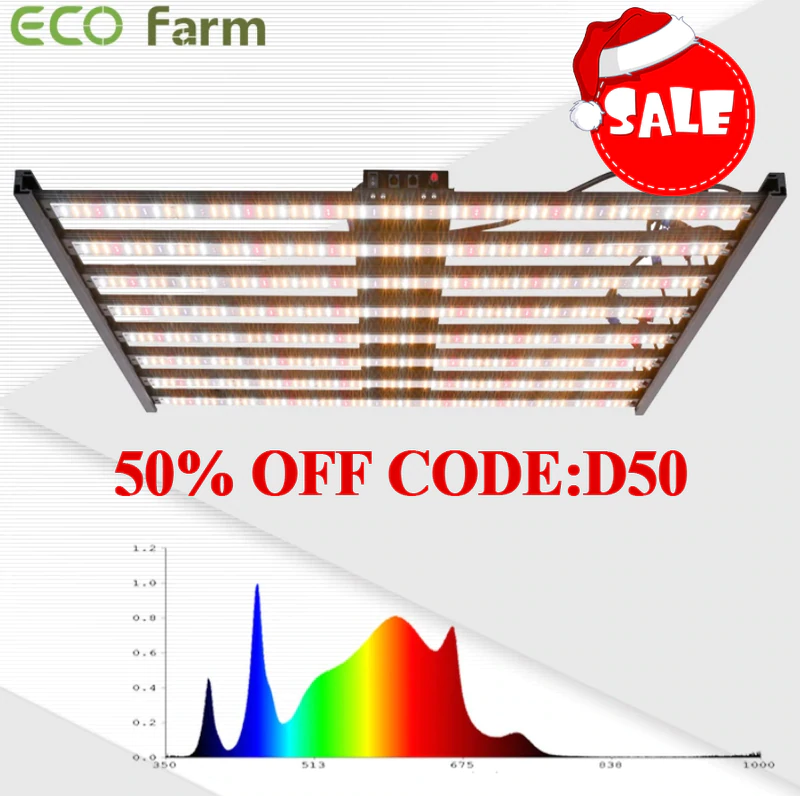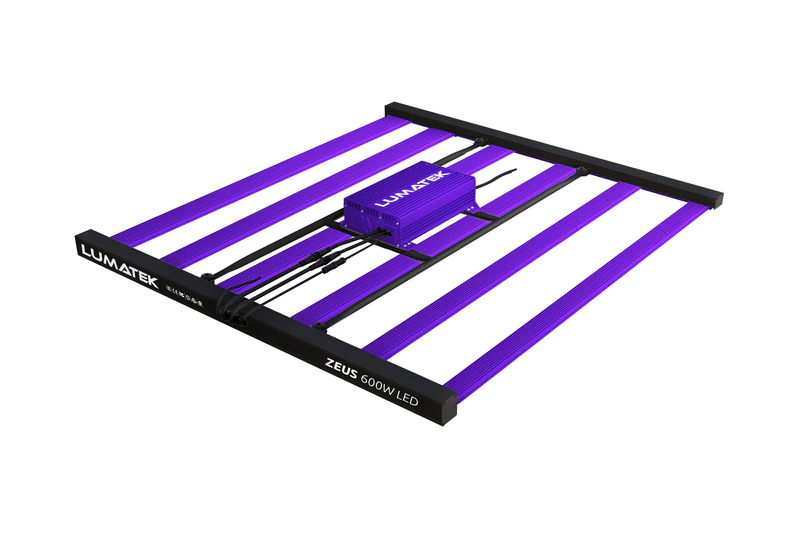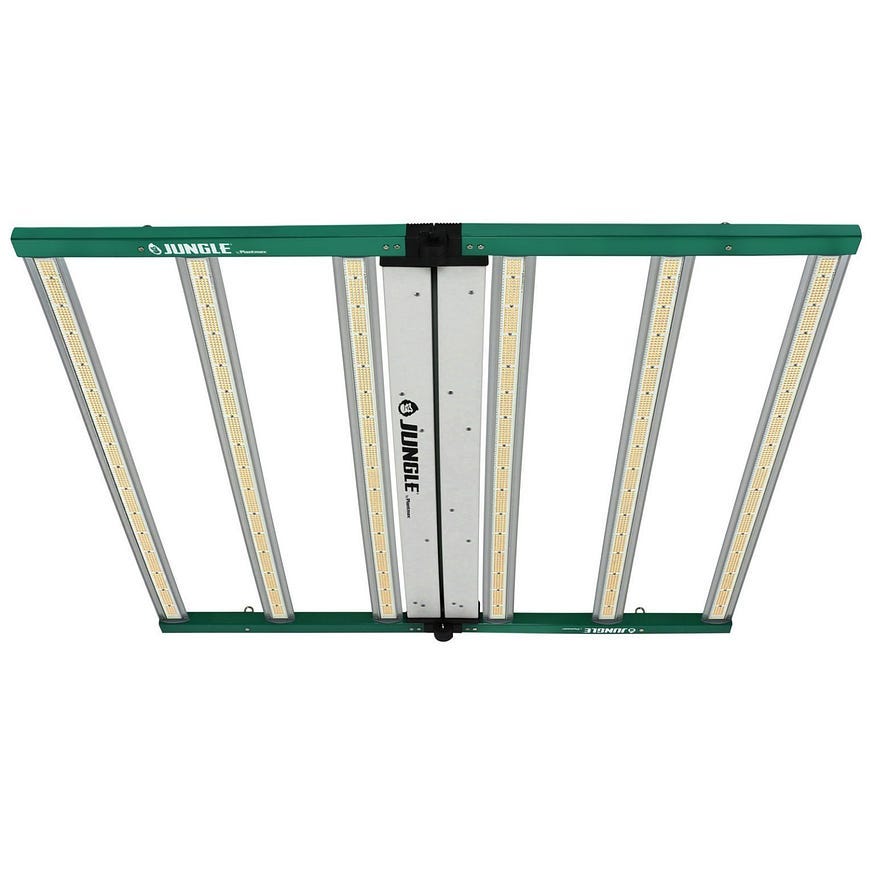Greenhouse plants do well in natural light for most of the year. However, in order for your plants to thrive year-round, you may need supplemental grow lights. For example, the light may be blocked by trees, shelving units or even other plants; or the days may be too short to provide your plants with enough bright light.
Whether you’re just starting out or an experienced greenhouse gardener, grow lights are a great addition to any greenhouse. These artificial lighting systems can supplement or even completely replace natural sunlight, as long as you choose a lighting system that suits your gardening needs.
The Importance of Grow Lights for Houseplants
Plants need light for photosynthesis, which is critical to their growth and overall health. Indoor plants often don’t get enough natural light, especially in winter.
Grow lights, such as LED lights, can provide the necessary light to help your houseplants thrive.
Benefits of Blue and Red Wavelengths
Full-spectrum light mimics sunlight, providing the essential blue and red wavelengths that plants need for optimal growth. Blue light promotes vegetative growth, while red light promotes flowering and fruiting.
Full-spectrum light sources are ideal for supporting plants throughout their life cycle.
ECO Farm ECOD Samsung UV+ IR 640W Dimmable LED Grow Light

Features:
The ECO Farm LED grow light provides more higher PAR/LUMEN output, it can reduce the amount of electricity needed to grow plants and minimize the heat output, which can keep the grow room in the desired temperature range of 72–88 ℉.The grow light has a power draw of 640W (consumes 0.64 Kw per hour).The average price in the USA is $0.13/kWh,The per hour cost to operate this grow light is $0.08,which can save a lot of money. This LED grow light has high-energy efficiency with 2.8 umol/J,The 1514 μmol/(m2·s) can provides high-intensity full spectrum light for your plants,The 6 bar configuration helps to provide more even coverage accross your tent.640W LED growing lamp will make you get 35% higher yield compare with low power led lights, Max 2.5g yield per wattage (power draw). This grow lights are equipped with 6500K white and 3000K warm light LED beads,That will help your plant to get enough light intensity to actually produce flowers and fruits on your plants.
LUMATEK ZEUS 600W LED GROW LIGHT

Features:
Lumatek LED grow light balances light quality (spectrum) and light quantity (intensity and duration), enough to provide single-source lighting for the entire growth cycle from vegetative to flowering. The LED array produces uniform light transmission in close proximity to the crop, thereby providing a single source of planting lighting for multi-layer cultivation systems, single benches in low rooms, and planting tents. Zeus is built using high-quality Lumatek drivers and top bin LEDs from Osram and Lumileds to generate a full-spectrum light source suitable for vegetable and flowering cycles.
Jungle — LED G6i 1700 LED Grow Light

Features:
Jungle LED offers a high-performance light solution, delivering a full-cycle spectrum for vegetative growth and bloom stages to cede a more robust yield. The detachable design of Jungle’s power supply (LED driver) provides the flexibility of remote mounting onto most vertical rack systems without adding attachments or modification to your existing space. With the detachable power supply (LED driver), growers have the option to install the power unit away from growing space with its wall-mount-ready capability. The Jungle advanced LED system was designed to be efficient and easy to install right out of the box. With a variety of power cord length options, whether you are looking to mount the LED driver on the side of a rack or on the fixture itself, Jungle grow light comes with simple snap-lock connectors that make reconnecting cables quick and swift.
What to Look for When Buying Growing Lights
Grow lights come in all shapes and sizes, from ceiling bulbs to purpose-built lamps with frames, pulley systems, and automatic timers. Depending on your plants’ needs, there are good uses for all types of grow light.
Below we’ll explore the uses for each different type of grow light, so you can make an informed decision on the type of grow light you need.
What is the Best Wattage for Grow Lights?
Growing lights come in a range of powers, and as you can probably guess, the stronger the wattage, the stronger the light. To compare wattage to sunlight, sunlight is around 1370 watts per square metre.
It might seem like an obvious choice to go for a 1370W growing light, but there are some very specific considerations to make first:
Distance from lamp to crop
Lamp coverage (per m2)
Current ambient light levels
Lamp temperature
Crop requirements
The first consideration is distance. If your lamp has a coverage of 1 m2 and is hung correctly above a crop, it seems obvious to go for a 1370w lamp to directly replicate sunlight.
However, unless your plant is in otherwise complete darkness, there will be some current ambient light available through the day, meaning a 600w light is probably sufficient.
For dark, south-facing rooms, higher wattages are advisable, but not essential. High wattage growing lights have hotter lamp temperatures than sunlight on most days, so shouldn’t be placed within 1m of a plant to avoid burning it.
There are also safety considerations, particularly with older styles of halogen growing lights. And finally, think about the requirements of each crop.
If you’re growing plants that like their heads in the sun, but feet in the shade, light sweetcorn, then 600w is completely fine. For tropical houseplants in east-facing rooms, they’re often happier in slightly shaded places but need 12 hours of indirect light per day.
That can be hard in anything other than south-facing homes, so adding a low-level 300w ceiling bulb to a room to switch on in the evenings helps give them the right light levels to extend their sunlight hours.
Red/Blue vs Full Spectrum Growing Lights
OK, so what exactly is ‘full spectrum’? Well, essentially it’s just a marketing term to sell grow lights, as it’s far from the full spectrum of the sun’s light.
Grow lights do not replicate UV or UVA light, and they certainly don’t produce infrared in the same quantity as the sun. What full spectrum lights give us is the full spectrum of visible light. Meaning, everything you see in a rainbow, plus white.
Seedlings need a mix of blue and white light to develop shorter stronger growth on better roots. As plants develop they need red light to promote flowering, and a mix of blue and white in lower levels to support photosynthesis, leading to healthier foliage.
The other colours in the light spectrum help provide balanced light levels which prevent plants from growing leggy in search of natural light.
Conclusion
LED grow lights are a great addition to any indoor gardening setup, providing an optimal light spectrum to support plant growth and development. As LED technology has advanced, these lights have become increasingly sophisticated and energy efficient, making them ideal for those looking to grow their own plants indoors, whether for food production, ornamental purposes, or even medicinal purposes.
